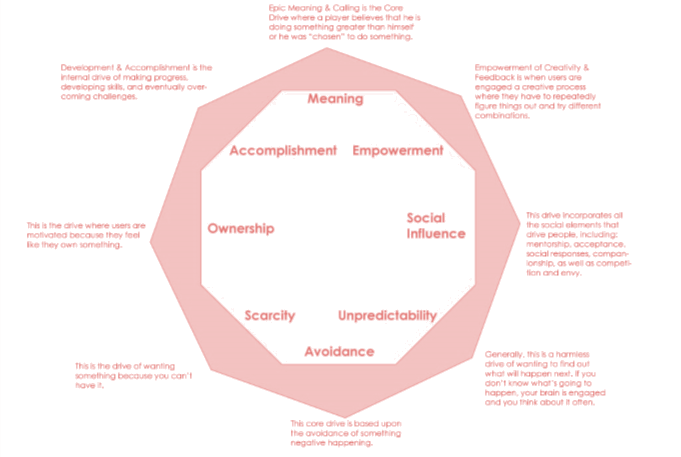S-Health: gamification for fitness motivation
Client: Samsung R&D, Bangalore
Work-title: Summer Internship, 2014
Project Timeline: 3 months (May- August 2014)
Mentor: Aditya Ponnada
Keywords: Health, motivation, behavior change, Gamification, UX design principles.
Role: Summer Intern. Role involved conducting explorative research and designing UX design principles for Samsung’s S-Health application.
The proposals of concepts were taken forward by the team of S-Health and commercialized in native app S-HEALTH of Samsung Devices.
Aim of the project: Designing for user experience and behavior change through "Gamification and Motivation" for fitness. Using Prof. Kevin Werbach's six-step gamification design framework, flows were developed to design for various fitness styles such as walking, running, jogging, cycling, etc,. The Trans theoretical model was used to understand the behavioral changes of a person during different stages in a fitness regimen. The octalysis of Gamification was used in later stages of the framework for a better understanding and concept generation. Full details of the project cannot be published due to NDA (non-disclosure agreement) and confidentiality.

My design process throughout this project
Research can be fun when you know interesting frameworks to work with.
I have applied these three frameworks to incorporate motivation throughout user’s interaction with S-Health app. I have detailed how these frameworks were applied to my design process below.
Trans-Theoretical Model
Octalysis of Gamification
Prof. Kevin Werbach's six-step gamification design framework
trans-theoretical model
The trans-theoretical model of behavior change assess an individual’s readiness to act on a new healthier behavior, and provides strategies, or processes to guide the individual through the stages of change to Action and Maintenance. For each stage, people apply cognitive, affective, and evaluative processes which are mentioned at the bottom of the map. The stages include:
Precontemplation - Stage where people do not intend to take action in the foreseeable future. Contemplation - Stage where people are intending to start the healthy behavior in the foreseeable
future.
Preparation (Determination) - Stage where people are ready to take action within the next 30 days.
Action - Stage where people intend to keep moving forward with that behavior change.
Maintenance - Stage where people have sustained their behavior change.
octalysis of gamification
This framework is a result to consolidate the 8 core devices that would drive motivation and build gamification effects. The eight sides of the octagon represent each quality as follows: Meaning, Empowerment, Ownership, Scarcity, Avoidance, Unpredictability, Social Influence and Empowerment.
Within Octalysis, the Core Drives on the right are Right Brain Core Drives, being more related to creativity, self-expression, and social aspects.
The Core Drives on the left are Left Brain Core Drives, being more associated to logic, calculations, and ownership.
Six-Step Gamification Design Framework
This framework was similar to the usual Design Process of setting goal, conceptualization and implementation.
Define business objective : introduce “Gamification in S-Health App”.
Target Behaviors: Motivate humans and personalize fitness experiences through gamification.
Devise Activity Loops + Adding fun elements: Flows created for individual fitness activities like walking, jogging, running, cycling, sleep cycle and food intake ( small fraction of work). In these workflows, placeholders were designed to introduce motivational elements like gamified elements.
Deploy Appropriate tools: Tools included policies on how the users were collecting badges and steps of retained motivation among users on a daily basis. These even included the rewards like badges, level breaking, collaborator rewards and app store purchases.
my design contribution
WORKFLOWS OR ACTIVITY LOOPS
As explained in the fourth step of the gamification design framework, activity loops for different fitness activities like walking, jogging, running, cycling, sleep cycle and food intake taking different measures to reward like distance, time, speed, regularity, improvement and information rewards.
Due to NDA, I cannot present my design work as is, but these workflows were designed to mark various instances and rules through the user’s journey with the health app or in general, with their fitness to provide gamified elements (inspired from octalysis of gamification).
deliverables
The proposals of concepts were taken forward by the team of S-Health and commercialized in native app S-Health of Samsung Devices.
As a deliverable of my internship, I have designed:
design principles of user experience for gamified motivation through S-Health app
rules and criteria for various badges for developers
wireframes of conceptual profile page, leaderboard pages, information page, etc.
my design contribution translated into screens
Few of the screenshots from current screens are presented above as examples of implementation of my proposals which included various intervention points to gamify the experience, the kinds of information to provide for motivating fitness sustainability, rejoicing smaller moments such as “Wake up on time”, “Bed on time” , Good time keeping” etc, instead of overall performance.








